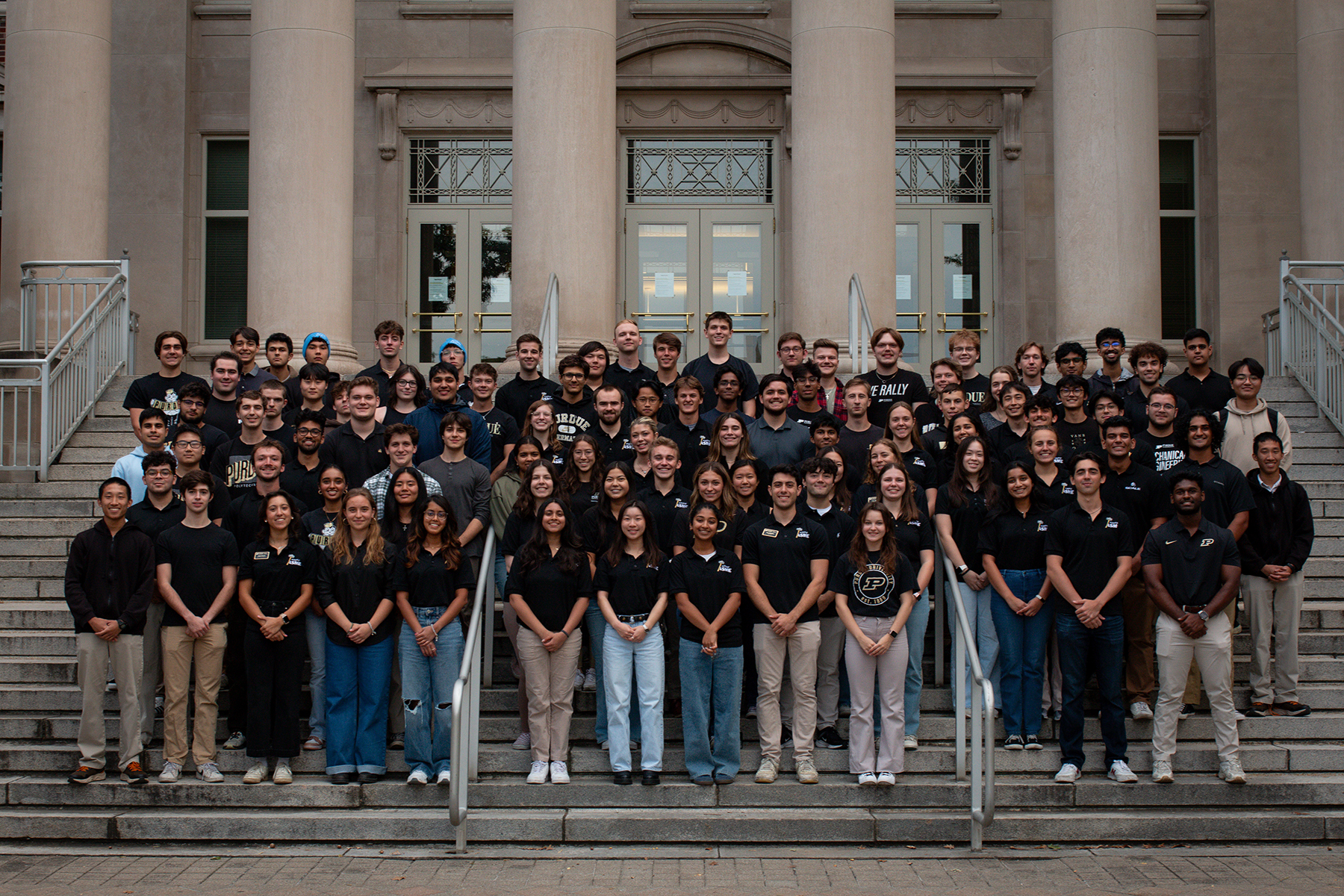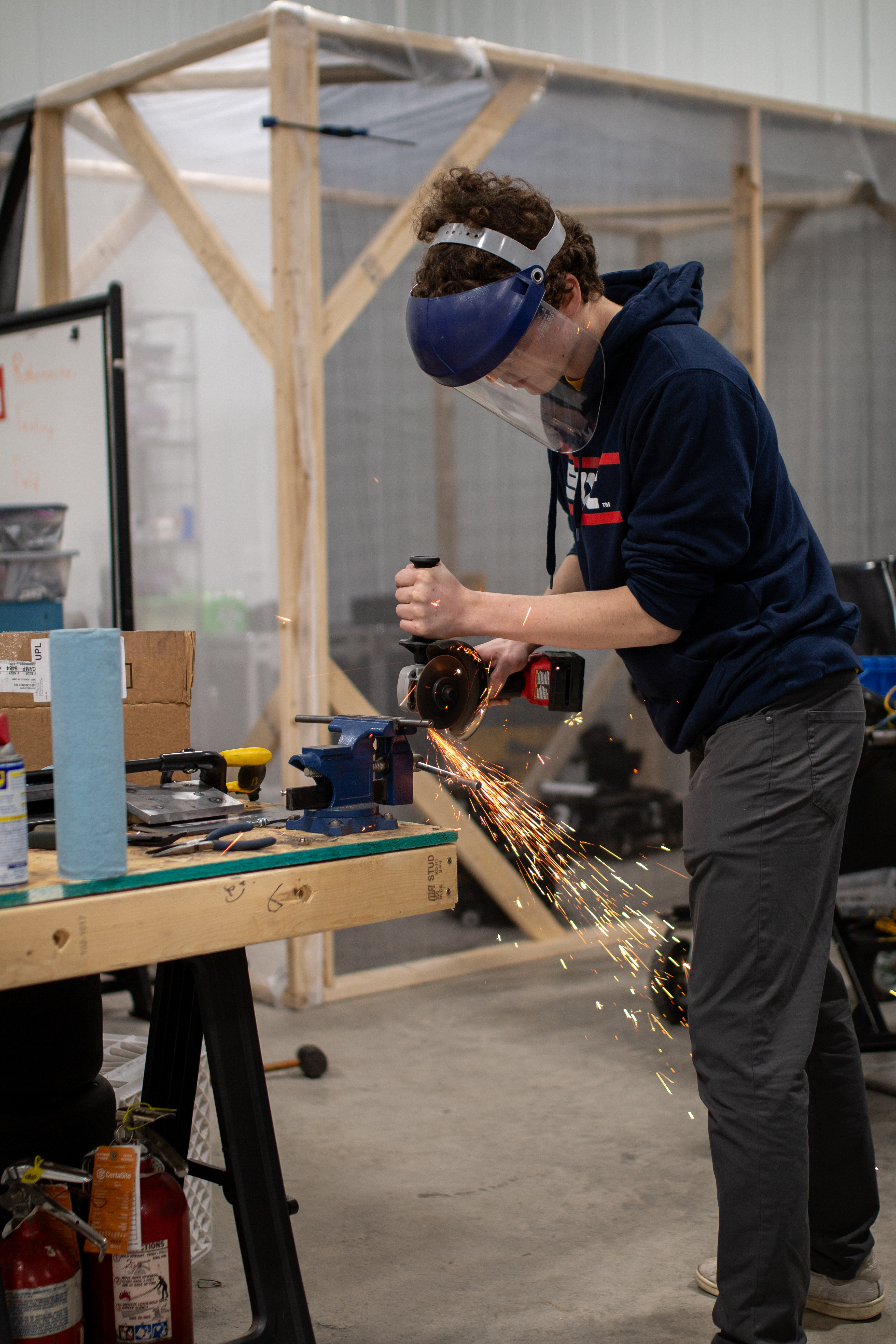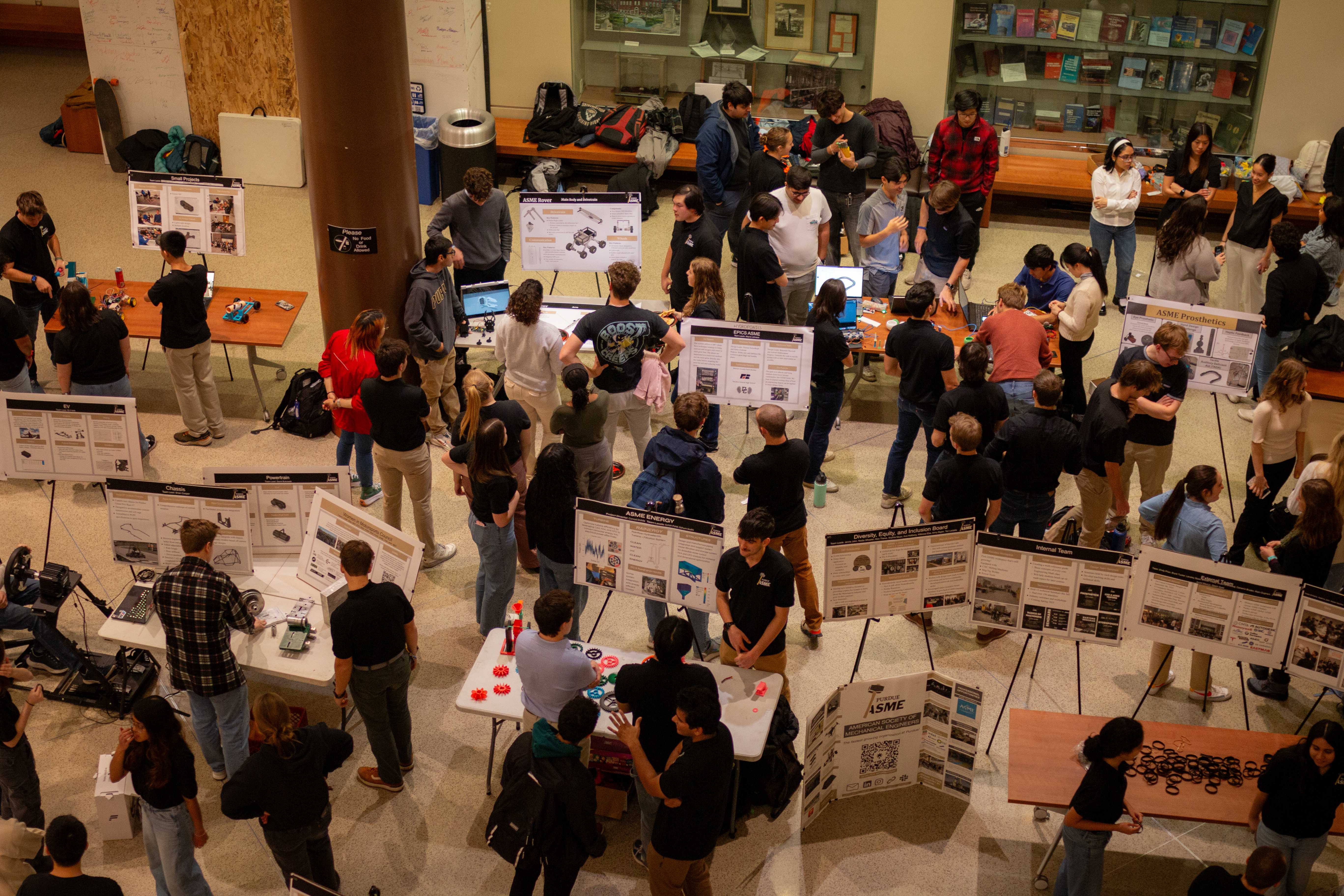Setting the standard: the Purdue ASME chapter

A Quick History
At Purdue, ASME began as the Society of Mechanical Engineers, established in 1897 — one of the oldest continually operating student organizations at Purdue. It wasn’t until 1909-1910 that it became affiliated with the national society and changed its name to the current one. The group flourished for many years until the pandemic hit, reducing its membership to only a handful of students. The future was uncertain for the organization until 2021, when a former student Marcus Lannie took it upon himself to revive it. ASME has since skyrocketed in growth, now boasting hundreds of members. The Purdue chapter is now one of the biggest in the country and has won the Outstanding Chapter Award, the DEI Award, and the Innovation Award just in the last two years.
The Design Teams

ASME has nine design teams: Small Projects, Aero, Biomechanics, Energy, Racing, Hydroponics, Robotics, Rube Goldberg, and Consulting. Each of these teams was created with the intention of giving students an opportunity to work in a field they could pursue after graduation. They were selected based on the areas where most mechanical engineers work during their first year in industry.
The Small Projects team is typically freshman and sophomores looking for hands-on experience but is open to anyone. The goal is to complete a project from start to finish, beginning with design and ending with a finished product. In the past, teams have created quadcopters, RC boats and submarines, and RC ATVs.
“The Small Projects team was interesting to me because as a freshman it’s hard to get hands-on experience,” said Natalia Zagata, first year engineering student at Purdue. “I really enjoyed getting to build something from the ground up.”
Aero, a newly formed team, focuses on designing unmanned aerial systems, 3D-printed gliders, and solar-powered aircraft. With Purdue’s campus already having numerous rocket teams, ASME wanted to create a space for students to work on other aviation-based projects. With 70 members already, they hope to continue to grow and eventually get the chance to compete in competitions.
The Biomechanics team focuses on creating prosthetics and strives to find individuals they can assist. They’ve built a custom hand prosthetic for someone who lost their fingers in an accident and are currently developing a biomimetic eye prosthetic designed to replicate a human eye that can be utilized by individuals with eye loss.
ASME’s Energy team creates small scale sustainable energy solutions and often participates in competitions. In the past, they’ve worked on projects for the DC House, a residential home in West Lafayette that serves as a testbed for sustainable energy projects. For this, they created a device that was able to turn collected rainwater into clean drinking water. Another sub-team, PowerPath is using piezoelectric tiles to harness energy from footsteps on Purdue’s campus.
.jpg)
There are three karts in ASME’s Racing team; two compete in the Purdue Grand Prix and one in the EV Grand Prix. Within the Racing team, there are different sub-teams that focus on a different part of the kart. The vehicle performance team uses sensors on the kart to track braking performance, angle of steering and much more. Tanmaee Ledalla, a junior in mechanical engineering, is the project director for the racing team but once led the vehicle performance team.
“I really loved doing the technical parts of the racing team,” she said. “However, as I’ve stepped into the project director role, I realized I care a lot more about the impact I have on all the members. It’s really rewarding to know that I can create a positive experience for them.”
The Hydroponics team has partnered with EPICS, a service-learning design program where students partner with local communities to address certain needs. This team is developing a hydroponic system that grows fresh produce which will be implemented in community centers throughout Indiana with the help of the Marion Country Farm Bureau and the Felege Hiywot Center. The project aims to help address food-insecurity while also providing students with hands-on engineering education.
The Robotics team allows students to learn a multidisciplinary approach to building robots. They work on a robot meant to compete in a competition simulating conditions on Mars. The robot must succeed in moving along Mars terrain, picking up a load, and moving it from one place to another.
Rube Goldberg is a competition where teams are challenged to design a machine that performs a simple task in a complex and creative way. ASME has a dedicated team working on this chain-reaction device for the national competition, which takes place annually. This year’s competition will be held at Purdue University in April.
ASME even has a Consulting team for students who are more interested in the business side of engineering. Members partner with local companies and work on solutions for their low priority problems, gaining valuable technical and professional skills.
That’s Not All They Do…
ASME also host seminars, resume reviews, poster shows, interview prep sessions, and often collaborate with other student organizations within mechanical engineering and in other majors. Every fall they throw a banquet for their corporate sponsors, and also hold community service events such as a blood drive and a food drive.

They pride themselves on having leadership opportunities for everyone, whether it be on their board of directors, the internal and external team, the marketing team or the DEI board. There is even a position called executive assistant that allows students to shadow different leadership positions like president or vice president, giving them the chance to explore the role before deciding to run.
“I’m really glad I was an executive assistant because there’s not a lot of leadership opportunities as a freshman,” said Bradan Welby, a sophomore in mechanical engineering. “Plus, leadership roles can be intimidating so getting to try it out without the responsibility was nice.”
President Joey

The current president, Joey Bellofatto, a senior in mechanical engineering, has been in ASME since his sophomore year. He started off on the Racing team, working as transmission lead.
“When they asked me to be the lead, I was like, ‘Who, me?’ I didn’t even know what a transmission was,” said Bellofatto.
The following year he became chief engineer of the team where they built a more advanced transmission and their own chassis which hadn’t been done in decades. Joey then decided to run for president, wanting to make a difference in the lives of all students who join ASME.
“As president, I want to make ASME something that students go home and talk about to their roommates, or look back at fondly when they graduate,” he explained. “Or when someone asks them how they got their job, they can say, ‘ASME helped me get it.’”
Why ASME?
“ASME is a place where you will be surrounded by people who want to help you, empower you, and make you feel like a great engineer,” said Bellofatto. “I had a really hard freshman year and ASME was the first place I felt like I belonged. It made me feel valued in this big, 50,000 person school and I really want anyone who joins ASME to get the same feeling.”
“I would advise students to just give it a shot and if they ever have any questions, everyone in the club is so nice and willing to help out, especially Joey,” said Zagata. “Even if you feel like you don’t have a lot of time to give, still join, there’s plenty of other things you can do in the club that don’t need all of your spare time.”
“No matter who you are or what you like, there is a place for you in ASME,” said Ledalla. “Something that I'm really proud of, is that we try to help each member succeed and there are no barriers to entry.”
“ASME is what you put into it,” said Welby. “It doesn’t matter if you just want to meet people who share similar interests, or you want to complete a technical project, you are going to get something valuable out of joining.”
Writer: Julia Davis, juliadavis@purdue.edu
